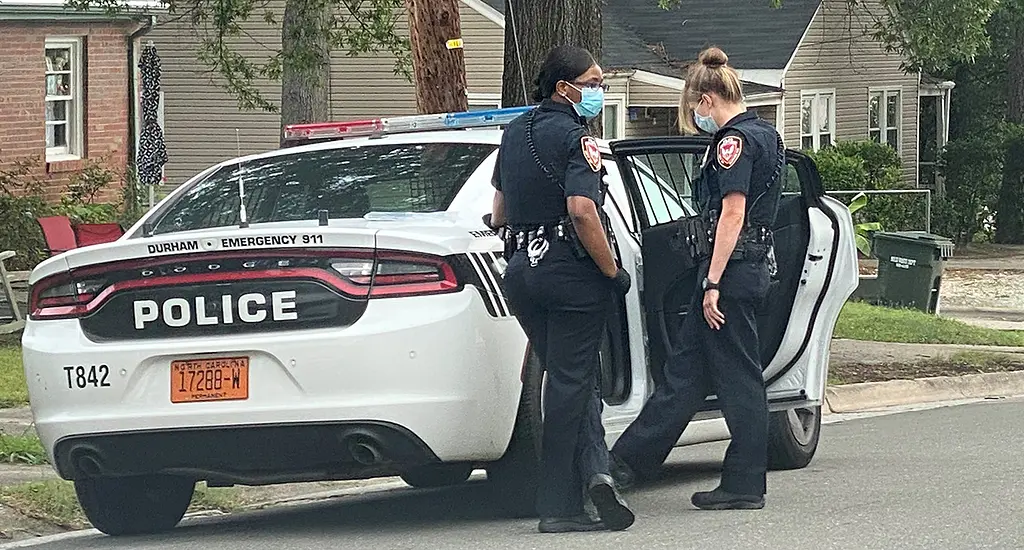George Floyd’s excruciating death at the hands of police was a devastating reminder of how much work needs to be done to address issues of racism, inequality and inequity in our society. One growing movement widely circulating is ‘defunding’ the police, a term that carries different meanings. To some it means to completely dismantle a police department and start from scratch. This is what occurred in places like Camden, New Jersey, where in 2013 the police department was disbanded and a new agency was established with an emphasis on community policing and cultural change. A similar approach has been proposed in Minneapolis, with initial plans for a new department that would underscore community safety, public health, and restorative justice approaches. For others, defunding the police signifies making major changes, including taking police budgets and reallocating some portion of it to social services and community organizations. Law enforcement in the United States is a complex and disjointed system, with more than 18,000 state and local agencies that vary tremendously in their size, organization, and culture. It is also closely intertwined with many other social institutions and systems. Changes to any of these systems, and to law enforcement’s role in particular, must be done in a manner that carefully considers the impact on communities. Planning should include community members who have been subject to excessive actions from law enforcement, but also those who directly and profoundly benefit from law enforcement efforts, including crime victims. We must identify measurable ways in which law enforcement can serve all communities and provide greater transparency around the ongoing needs of communities and the police response to those needs.
To chart out a viable path for identifying and evaluating possible changes to policing, we propose that data and empirical evidence should drive decision making. Without understanding the underlying issues that a city, town, or county faces and what solutions are effective at ensuring public safety, the reallocation of funding and programs could be based on an incomplete picture of community needs. As such, we offer several tangible steps for leaders in policing, state and local government, and research to consider. These steps are certainly not a panacea for all the challenges facing law enforcement or society more broadly but are intended to provide a balanced and systematic approach for moving forward.
1) Adopt a data driven and evidence-based approach.
Data and research should serve as the foundation for determining what works in policing—and what doesn’t. This is particularly important around many of the critical topics currently being discussed including the impact and role of de-escalation or implicit bias training for individual officers or agencies, the effectiveness of early warning systems used to flag “at-risk” officers, or even co-responder models that pair a law enforcement officer with a social worker or clinician. The first step here is to acknowledge that data and research must be an integral component of reform discussions. This approach can inform the decision-making process to help ensure that any new strategies can be implemented as planned, have the support of the community, be sustained from a staffing and resources perspective, and, importantly, have strong likelihood of success. Defining clear and measurable outcomes for success is also key. Here we believe that outcome measures should move beyond the traditional output-based metrics such as crime rates, clearance rates, and arrests and have a more a comprehensive focus on safety, accountability, effectiveness, and equity.
2) Inventory and Assemble All Data Sources that Can Inform Reform Efforts.
Decisions regarding any reform or the proper allocation of resources between police departments and other organizations should begin with data. There are many data sources that should be considered, including
- 911 Calls for Service data
- crime incident and arrest data
- automatic vehicle locator (AVL) data
- 311 non-emergency calls
- body-worn camera footage and associated meta-data
- and data on community perceptions and experiences with crime and the police.
Let’s start with some of the opportunities related to data from 911 calls. Call for Service (CFS) data is collected through a Computer Aided Dispatch (CAD) system by police and sheriff departments. CFS data includes citizen-initiated calls placed to 911, activity called in by an officer (for example, a traffic stop), and activities such as directed patrols within a particular neighborhood for community policing and crime prevention. CFS data also track EMS and fire responses to 911 calls. In many ways, CFS can serve as a foundational data source for evaluating not only community needs and police activity but also the actions of other first responders.
Using CFS data as a starting point can help inform what police do on a day-to-day basis, including the broad range of crime- and non-crime events that police play a primary role in addressing. For example:
1) What are first responders, including police, fire, and emergency medical services (EMS), being asked to do by their community through the 911 system?
2) What types of 911 calls from the community are prioritized for law enforcement response compared to fire and EMS?
3) What is happening as the result of the CFS responses to either citizen 911 calls or police-directed activity? This can address how often a call to 911 is handled informally, closed without further action, or results in an official police report and an arrest.
Some calls often prioritized for a police response may not need a law enforcement officer for a successful resolution. The vast majority of 911 calls that police respond to do not involve serious crimes. In fact, based on data from places such as Los Angeles, New Orleans, and Boston, we know that generally 4 to 8 percent of calls involve violent crime. Phillip Bump of the Washington Post analyzed calls for service data in New Orleans from 2019 (including both citizen and police-initiated calls) reported that 5 percent pertaining to major crimes, sex-based offenses, or crimes involving bodily harm, while 70 percent of calls were related to checks on people or property (which included events such as disturbance calls or alarm calls) and about 16 percent of calls were related to vehicles or traffic.
An analyst should begin with basic descriptive statistics demonstrating the number of the different types of calls that are being generated over the last three years, one year, and 90 days to get an idea of the basic trends. Then the calls should be categorized and mapped to get an understanding for what parts of the community are requesting more services. Calls can be broken down by the different types and priorities including calls related to homeless populations, mental health, drug overdoses, and family disputes or violence. One common problem here we should highlight is that some agencies organize large numbers of calls into nondescript categories such as “disorderly” or “other”. We then need to determine how many CFS are being fielded by the police versus other first responders (as well as how many calls have a joint response by police, EMS, and fire, for example). More specific calculations on how much time and money is being spent across different types of calls and by different first responders are also possible and can directly inform the budgetary impacts of any proposed policy decisions.
Bolstering social and community-based services to meet complex, societal issues is absolutely necessary; but we also need to recognize that there are no broad stroke answers. As an example, we cannot assume that every 911 call within a particular category is the same and requires the same response. A 911 call from a business owner that a person is sleeping on their property could be responded to by an outreach worker, but what if the individual refuses to leave or becomes violent? Similarly, what if a person who appears to be in a state of intoxication gets into an argument over personal property and displays a weapon? A social worker or other community responder could be placing themselves and the public at risk and may not have the ability to adequately address the situation. Other examples include 911 calls for loud music (one of the most frequent call types for police, especially in larger cities) or traffic accidents. The vast majority could be presumably handled by a non-police response but the safety of that responder AND their ability to address and find a solution to the problem at hand must both be considered.

3. Focus on What Works: Accelerate the Shift Toward Evidence-Based Responses
Once a problem is defined using data, the next step should be to examine the available solutions to the problem and seek out those that include evidence-based practices. Many currently proposed reforms are not supported by quality research. For instance, de-escalation training appears to be a promising approach to reduce officer use of force, but there is still limited evidence of the efficacy of the training. Many of the studies that exist take place in hospital or therapeutic environments but do not evaluate de-escalation tactics in policing. A systematic review of de-escalation techniques conducted by Engel et al. (2019) reviewed 64 studies and found only three evaluations that were considered rigorous based on the Maryland Scientific Methods Scale. Early warning systems are another practice that is receiving wide support but have a limited base of support in research. As a result, questions remain in terms of how these types of efforts impact individuals and policing organizations.
When considering reallocating funding to other programs or strategies, we should answer some major questions about how we, as a society, respond to crises related to substance abuse, homelessness, and mental illness. For example, a combination of Medication Assisted Treatment (MAT) and cognitive behavioral therapy has produced positive results for people with alcohol and substance abuse dependency. In many instances, though, this combination is not part of an offender’s treatment plan. Research has shown that permanent deep rental subsidies can help prevent poor families from becoming homeless. Shallow subsidies, along with supportive care, can help high-risk groups maintain housing. We should also be questioning why programs that are not supported by research continue to be used. Too often we are sending vulnerable populations back out onto the streets without evidence-based interventions or after-care support.
One of the best places to look for evidence-based crime prevention is the U.K. College of Policing What Works website. Their toolkit evaluates crime prevention interventions based on an EMMIE (Effect, Mechanism, Moderator, Implementation, and Economic cost) framework. There are over 50 interventions listed, with many interventions shown to not work, including boot camps, scared straight programs, youth offender aftercare, and youth curfews. Importantly, many interventions have been shown to work, including hot spots policing, therapeutic communities and therapeutic foster care, restorative justice, and problem-oriented policing.
In summary, there are ways to “rethink” or even “defund” the police to reallocate some portion of budgets to better serve a community. But it is imperative that these decisions are based on evidence and data, including data on community needs, rather than solutions that sound promising but are still unproven. We must also answer some critical questions. How do we define the costs, benefits, and potential consequences of reallocating funding and responsibilities for certain areas now handled by the police? What are the timelines for these changes? During this process of reexamination, it is also important that we look at areas that may be underfunded, including the role police and other multidisciplinary partners play in supporting crime victims.
Furthermore, how can we speed up the development and identification of evidence-based practices within policing? De-escalation training, increased officer and agency accountability, enhanced use of force policies and training, and limitations on less lethal use of force all may be effective areas of reform, but will they achieve the changes citizens want to see in their communities? No matter the proposed solution, both organizational and community leaders should be open to new research, methods, and ideas. By creating a policing profession based on proven practices, accountability, and active engagement with all communities, we can move one step closer to a justice system that is fair and balanced for everyone.


